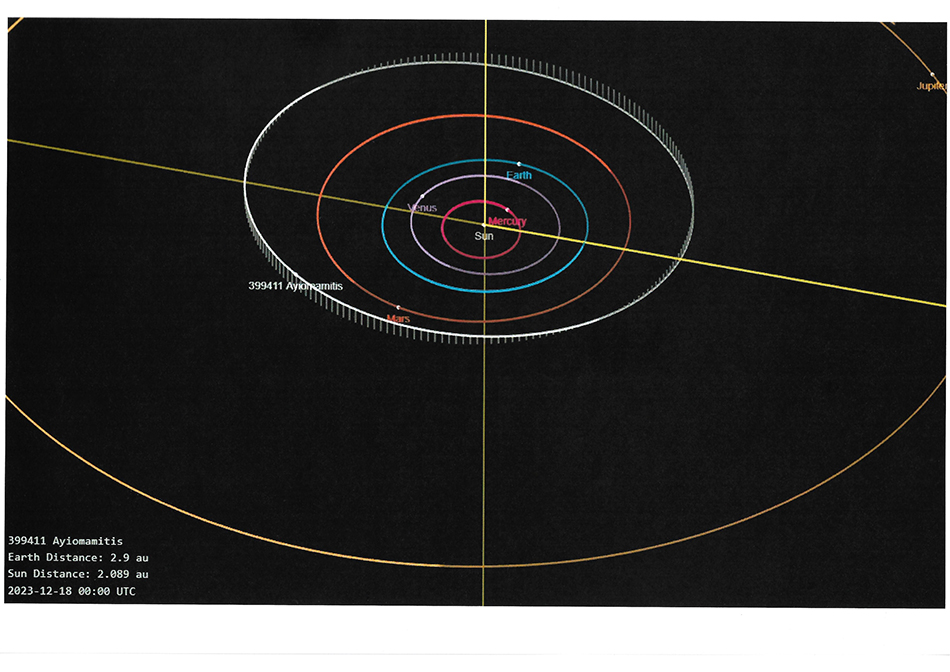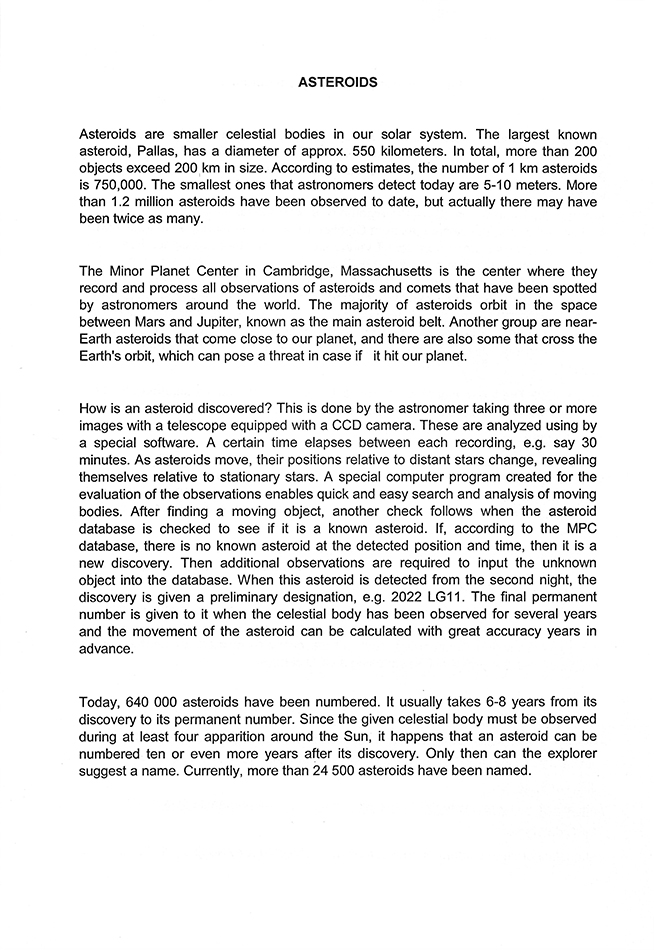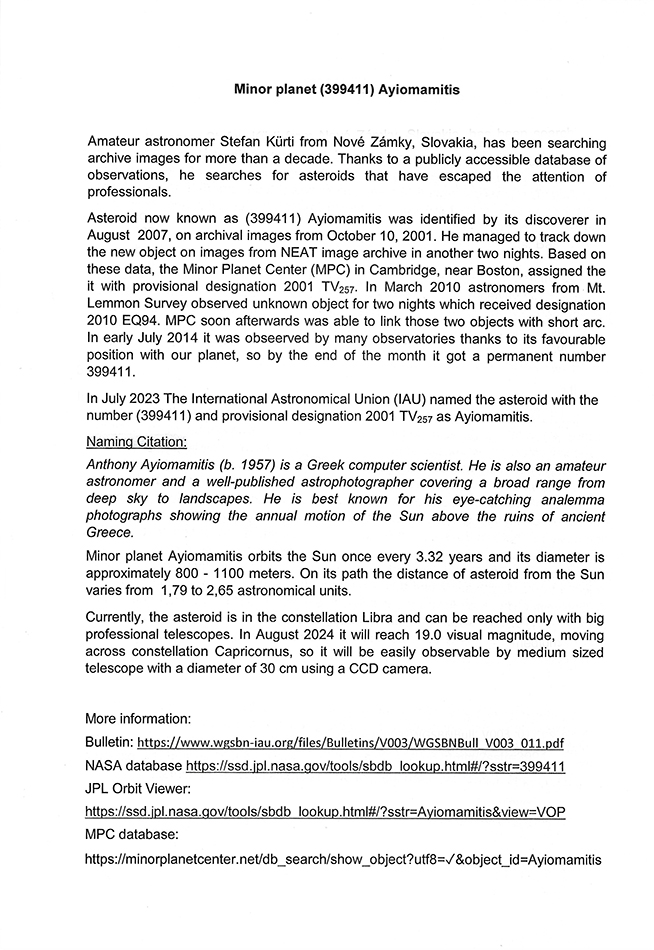
It was believed that the asteroid belt, the area between Mars and Jupiter, may at one time have been the location of another planet which was
pulverized by a cosmic collision with another body such as a comet travelling through our Solar System. This theory has been discarded and
current thinking is that the asteroid belt simply represents material from the early stages of our Solar System which simply failed to form
into planetary forms.
As of January 1st, 2024, more than 1.3 million
asteroids have been identified with Ceres, the largest known asteroid, measuring over 900 kilometers across and to be comprised of water by up to
25%! The total mass of the asteroids
discovered so far is only about 3% that of the Moon and are characterized with fairly circular orbits (ie low eccentricity) and which revolve
around the Sun in the same direction as the Earth while requiring three to six years to complete one full orbit. The main asteroid belt between
Mars and Jupiter hosts the overwhelming majority of asteroids discovered so far and whose distance is between two and four astronomical units
with more than 200 asteroids having been discovered so far which measure at least 100 kilometers in diameter. For an extensive list of
asteroids with associated details (discoverer etc), click here.
In late July, 2023 I was informed (very much to my surprise) that the International Astronomical Union named a main belt asteroid after me and
in honour of my work in astrophotography. The asteroid, 399411 Ayiomamitis, was discovered on Oct 10, 2001 by Slovakian astronomer Stefan Skurti
on plates from NASA's NEAT (Near-Earth Asteroid Tracking) program at Palomar Observatory in southern California with various follow-up observations
having established that 399411 Ayiomamitis has a fairly circular orbit (eccentricity = 0.1922), a diameter of 800 to 1100 meters across, a period
of 1211.6 days (3.317 years) for one complete orbit around the Sun with perihelion and aphelion distances of 1.797 and 2.224 AU respectively.
The asteroid's inclination relative to the plane of the Solar System is quite minor at only 5.040 degrees whereas opposition will be on Aug 12, 2024
at a magnitude of 18.932 while traversing the constellation of Capricornus.
The official IAU announcement regarding the asteroid naming to
399411 Ayiomamitis
in the WGSBN Bulletin (July 24, 2023; page 14) is available
here.
| Asteroid 399411 Ayiomamitis | ||||
|---|---|---|---|---|
 |
||||
 |
||||
 |
||||
 |
||||
 |
||||
 |
||||